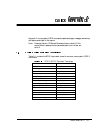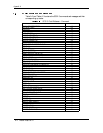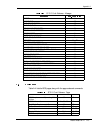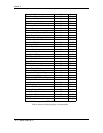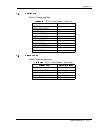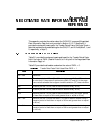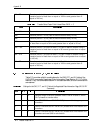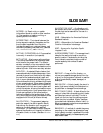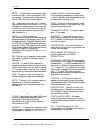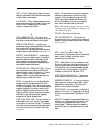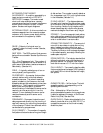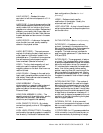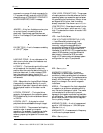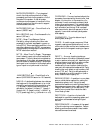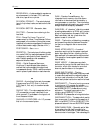
Maxtor Atlas 10K III 18/36/73 GB Ultra160 SCSI G-1
ACCESS – (v) Read, write, or update
information stored on a disk or other medium.
(n) The operation of reading, writing, or
updating stored information.
ACCESS TIME – The interval between the
time a request is made by the system and the
time the data is available from the drive.
Includes the seek time, rotational latency, and
command processing overhead time. (See also
seek, rotational latency, and overhead.)
ACTIVE I/O PROCESS– An I/O process that
is currently in execution (not queued).
ACTUATOR – Also known as the positioner.
The internal mechanism that moves the read/
write head to the proper track. The Maxtor
actuator consists of a rotor connected to head
mounting arms that position the heads over the
desired cylinder. Also known as rotary actuator.
AIRLOCK – A patented Maxtor feature that
ensures durable and reliable data storage. Upon
removal of power from the drive for any reason,
the read/write heads automatically park and
lock in a non data area called the landing zone.
Airlock allows the drive to withstand high levels
of non-operating shock. When power is applied
to the drive, airflow created from the spinning
disks causes the Airlock arm to swing back and
unlock the actuator, allowing the heads to move
from the landing zone. Upon power down, the
Airlock swings back to the locked position,
locking the heads in the landing zone. A park
utility is not required to park the heads on drives
equipped with Airlock (all Maxtor drives).
ALLOCATION – The process of assigning
particular areas of the disk to specific data or
instructions. An allocation unit is a group of
sectors on the disk reserved for specified
information. On hard disks for small computer
systems, the allocation unit is usually in the form
of a sector, block, or cluster. (See also
allocation
unit
.)
ALLOCATION UNIT – An allocation unit,
also known as a cluster, is a group of sectors on
the disk that can be reserved for the use of a
particular file.
ANSI – Abbreviation for American National
Standards Institute
ASCII – Abbreviation for American Standard
Code for Information Interchange
ASIC – Acronym for Application Specific
Integrated Circuit.
AVERAGE SEEK TIME – The average time it
takes for the read/write head to move to a
specific location. Calculated by dividing the
time it takes to complete a large number of
random seeks by the number of seeks
performed.
BACKUP – A copy of a file, directory, or
volume on a separate storage device from the
original, for the purpose of retrieval in case the
original is accidentally erased, damaged, or
destroyed.
BAD BLOCK – A block (usually the size of a
sector) that cannot reliably hold data due to a
physical flaw or damaged format markings.
BAD TRACK TABLE – A label affixed to the
casing of a hard disk drive stating which tracks
are flawed and cannot hold data. This list is
typed into the low-level formatting program
when the drive is installed. Maxtor users can
ignore bad track tables since Maxtor’s built-in
defect-management protections compensate for
these flaws automatically.
BANDING – A method of variable frequency
recording on the media that attempts to keep
the bit density constant, regardless of the track
radius. Banding greatly increases capacity and
data transfer rates.



